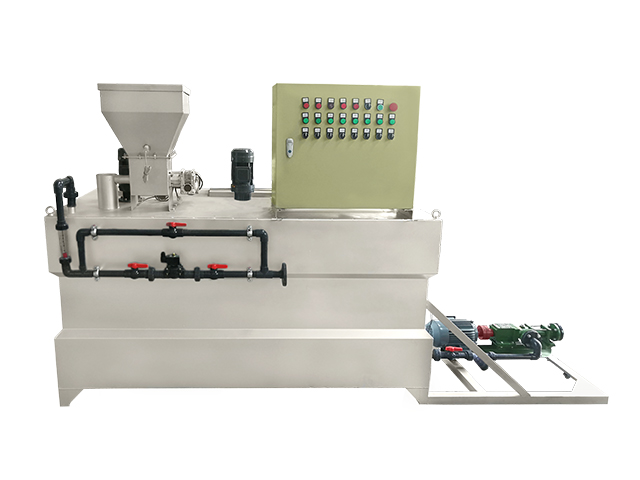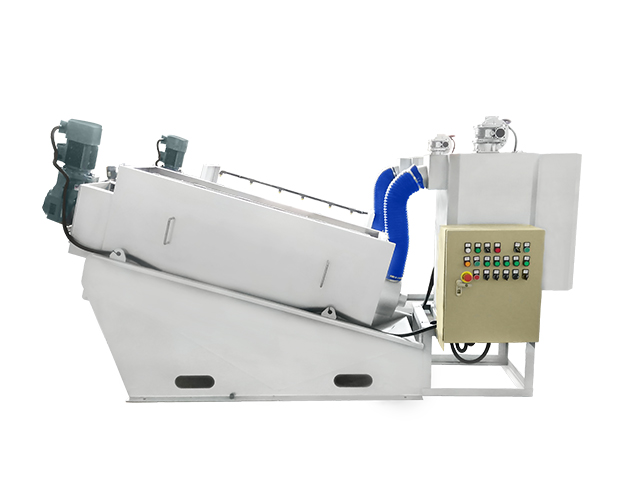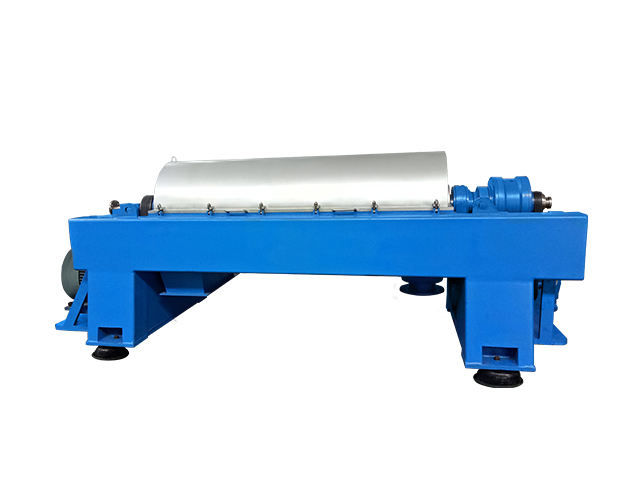
Application of centrifuge in food industry
Industry News
1. Structure of horizontal decanter centrifuge
Horizontal decanter centrifuge is mainly composed of drum, screw, differential gear, feed inlet, liquid outlet, solid outlet, liquid level baffle, drive system and control system.
2. Working principle of horizontal decanter centrifuge
Due to there is a density difference between solid phase and liquid phase, the centrifuge realizes the solid-liquid separation by accelerating the settling speed of solid particles under the action of centrifugal force. The sludge and flocculant solution are fed into the mixing chamber in the drum through the inlet pipe to be mixed and flocculated. Because of the high-speed rotation and frictional resistance of the rotor (screw and drum), the sludge is accelerated inside the rotor and forms a cylindrical liquid layer. Under the action of centrifugal force, the solid particles with higher density will settle to the inner wall of the drum, and be pushed to the cone section of the drum by the screw. After dewatering, the sludge will be discharged from the slag outlet, and the liquid will be discharged from the liquid outlet.
3. Characteristics of horizontal decanter centrifuge
3.1 High separation factor and high processing capacity
The separation factor of horizontal decanter centrifuge is generally between 1800 and 3500, which is 3-5 times higher than that of filter centrifuge. The whole separation is carried out continuously at high speed, so its suspension treatment capacity is larger than that of filter centrifuge.
3.2 Good adaptability
Because the solid particles of flexible, fibrous and mycelial materials are easy to deform under centrifugal pressure, so the filter centrifuge can not work effectively due to mesh blockage. Horizontal decanter centrifuge is based on the principle of centrifugal sedimentation. The whole separation process is carried out in a sealed drum without filter screen, so it will not be blocked.
3.3 Good operating environment
The separation process of horizontal decanter centrifuge is carried out in a sealed drum, and all parts contacting with materials are made of high quality stainless steel meeting the food hygiene conditions. Compared with the open type tripod centrifuge and filter centrifuge, it is more favored by the food and pharmaceutical industries.
3.4 Variable structural parameters
Horizontal decanter centrifuge can adjust the appropriate parameters according to different requirements. For example, the separation factor is determined by adjusting the rotating speed of the drum, the length of the settling zone is increased or decreased by changing the position of the overflow baffle, the residence time of the solid phase is adjusted by the change of the differential rotating speed, and the residence time of the liquid phase is adjusted by controlling the feed quantity.
3.5 High degree of automation
Horizontal decanter centrifuge is fully automatic. Once the structural parameters are set, the product quality is stable. The interference of environment and human factors can be almost eliminated, which is of great significance to ensure the quality of products.
4. Application examples
4.1 Citric acid production
In some factories, the vacuum suction filter was used in the separation process of citric acid and calcium sulfate in the past. But now the horizontal decanter centrifuge has been used. Under the condition of the same separation effect, the investment in infrastructure and equipment and the unit energy consumption are obviously reduced. At the same time, the labor intensity of workers is greatly reduced, and the working efficiency is improved.
4.2 Soy milk processing
In a soy milk factory, according to the original production process, the soy milk is separated and dehydrated by centrifugal screen or tripod centrifuge. It takes more than three hours to process 1 cubic metre, and there are a lot of fine particles larger than 5 microns. In summer, the temperature is high, the soy milk will be easy to deteriorate in the tripod centrifuge.
After using the horizontal decanter centrifuge, the soy slurry is directly sent to the horizontal decanter centrifuge with a processing capacity of 1.5 cubic metres per hour. Almost all the particles larger than 5 microns were removed, the moisture content of soybean dregs was less than 80%.
4.3 Juice processing
In the process of fruit juice production, it is necessary to remove impurities such as fruit seeds and crude fiber from the crushed fruit suspension, which is also a solid-liquid separation of flexible and fibrous materials. There was almost no fiber in the separated juice.
4.4 Application of horizontal decanter centrifuge in other food processing industries
The horizontal decanter centrifuge has also been used in other food industries, such as:
(1) Starch and protein separation, starch aqueous solution dewatering, starch grading, B-type starch separation, etc.
(2) Oil separation, sucrose separation, wine tank post-treatment, fish meal processing, mycelium waste liquid post-treatment, etc.
(3) Sludge dewatering in food industry.


